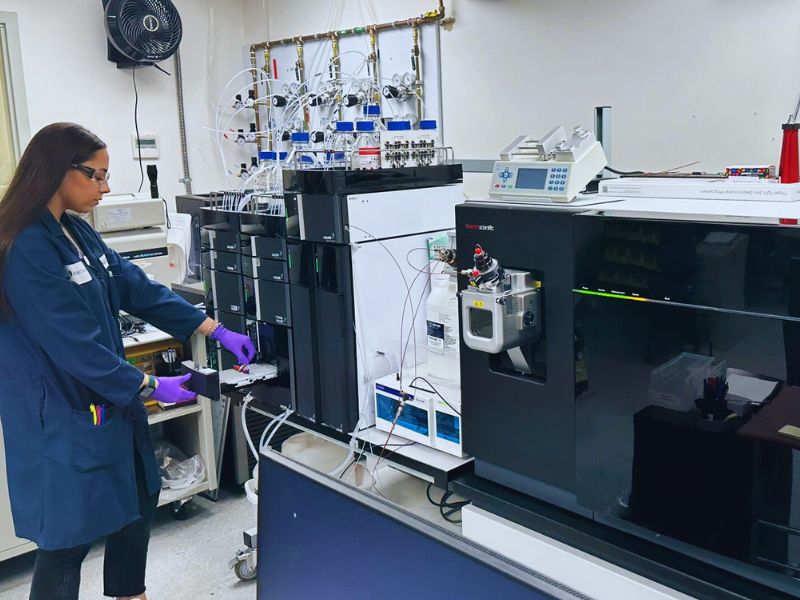Published: 07/10/2024
Smithers has added an Orbitrap Eclipse™ LC-MS
n System from Thermo Scientific™ to enhance
metabolite identification workflows, including MS
n analyses, with higher resolving power, better mass accuracy, and more stable mass calibration. This will mean more accurate and reliable data.
The system features an Orbitrap™ Tribrid™ mass spectrometer and advanced software for qualitative (identification) and quantitative applications, coupled to a Shimadzu™ UHPLC system capable of two-dimensional LC separations and coupled to a LabLogic™ β-RAM 6C radiometric detector for metabolite identification work and for quantitative analyses as well.
Benefits include:
• Improved mass accuracy that lowers the number of possible chemical formulas, increasing the chance of success in correctly identifying the new compound
• Higher resolving power, allowing separation of peaks in a compound’s mass spectrum coming from the most common radiolabel, carbon-14 (
14C), and other naturally occurring isotopes including
37Cl and
34S when they are present in a test material. This will allow us to match more accurately the ratio of labeled to unlabeled compound in the sample to assure that the potential metabolite originates from the test material. The increased resolving power will also make it easier to assign a chemical formula to a compound and back up that assignment using the calculated isotope pattern of the proposed structure superimposed on the
12C/
14C ratio of the test material
• Stepwise MS
n data, making elucidation of a metabolite’s structure more straight-forward than using traditional MS/MS data. MS
n does this by generating a documented stepwise fragmentation pattern to pinpoint the location of a transformation in larger, more complex test materials
• Support for
animal and crop metabolism studies, where higher background levels and matrices can make it more difficult to separate out signals from analytes and background
• Better mass accuracy alongside very narrow extraction windows, providing greater quantification specificity and sensitivity
• Better HPLC separation options for difficult-to-separate compounds and stereochemical isomers and enantiomers
Our scientific experts and continuing investments in instrumentation globally enable Smithers to provide industry-leading
environmental fate and
metabolism testing services.
Contact us to discuss your next project.
